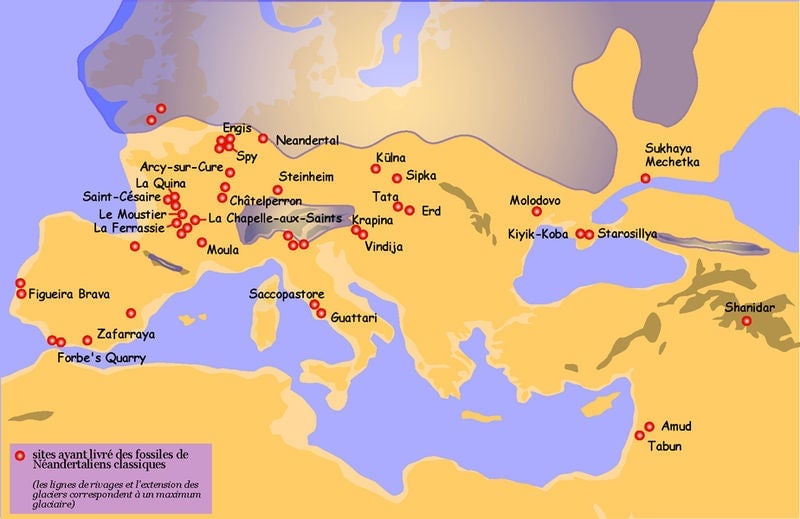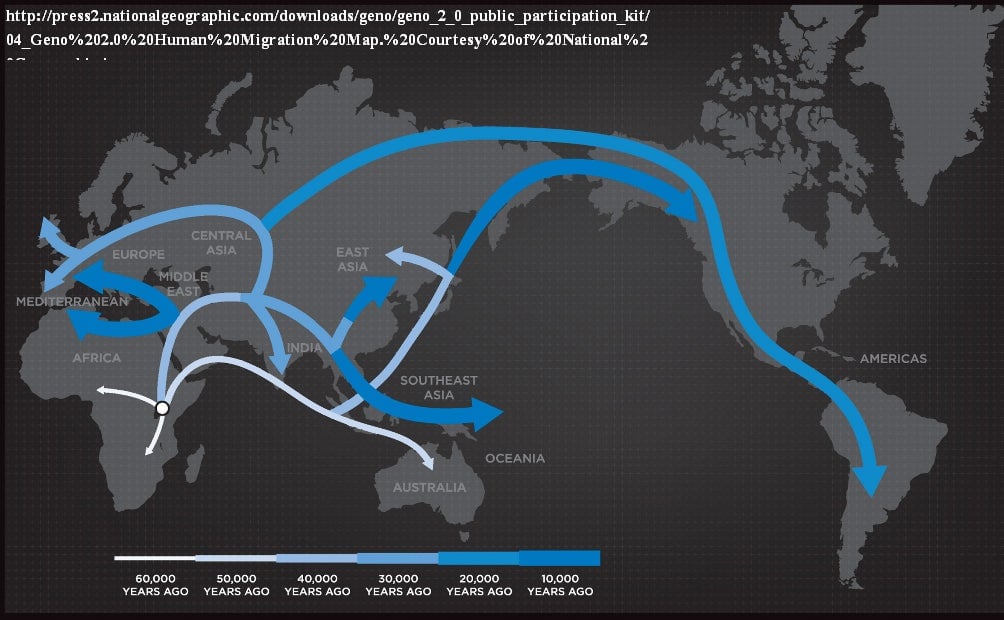One of science’s greatest mysteries deepens: Did humans kill off Neanderthals?
Sometime in the late Pleistocene period, humans and Neanderthals are believed to have lived together. Only one species still exists, and people who study human pre-history have battled for decades over the reasons why.

Sometime in the late Pleistocene period, humans and Neanderthals are believed to have lived together. Only one species still exists, and people who study human pre-history have battled for decades over the reasons why.
One of the more popular theories is that modern humans migrating out of Africa killed off the Neanderthal, because the humans were cognitively and technologically superior. Authors of a new study, however, say this theory is built on a false premise, and that there is no archaeological evidence to back it up. They say that Neanderthal extinction was more nuanced, possibly involving climate change, male sterility, and interbreeding with encroaching cousins from Africa.
Co-authors Paula Villa and Wil Roebroeks, respectively of the University of Colorado and Leiden University in the Netherlands, surveyed over 368 peer-reviewed papers, theses, and books. They believe the result is the most complete survey of archaeological evidence about Neanderthals compiled to date.
“There had been people who examined this particular aspect, but there has not been a systematic review like we have done,” Villa told Quartz. The reason, she says, is because many publications are in different languages: She and her co-author had to translate papers from French, German, Italian, Spanish, and Portuguese to compile their research.
“No other ancient people have aroused more controversy and confusion over the last century and a half than have the Neanderthals,” writes Daniel O’Neil, professor emeritus of anthropology at Palomar College in California. With that in mind, here is what we know about one of our closest dead relatives.
The story begins around 350,000 years ago, when the first Neanderthals evolved from a hominid species called Homo heidelbergensis that lived in Africa, Europe, and west Asia. Many scientists believe that heidelbergensis is the shared ancestor of Neanderthals and modern humans.
Neanderthals were adapted to cold weather, though they never migrated north of 50 degrees latitude, where the great glaciers rested. Over the course of their 300,000 years of existence, Neanderthals ranged from the tip of the Iberian peninsula to the Altai Mountains in southern Siberia. They made it as far south as Israel, but never into Africa. At its peak, their population was probably around 70,000.

Their decline began around 40,000 years ago, which is around the same time Homo sapiens from Africa were settling Eurasia. As with all things pertaining to pre-history, the details of this migration are a minefield of differing opinions, but here one of the more popular prevailing theories:

What happened next brings us to the current debate: Did humans bring about the extinction of Neanderthals. And if so, how?
In one corner are researchers like Pat Shipman, professor emerita of anthropology at Pennsylvania State University, who believes humans replaced Neanderthals by outcompeting —one top predator taking out another in the battle for resources. “There’s no way you can put another apex predator in that ecosystem and not wreak havoc,” she told Quartz.
As evidence, she points to things like superior weaponry and comparatively modern tools found at human settlements, and the domestication of a dog-like animal that may have helped humans hunt and protect their food from other predators, like wolves. “If you kill one mammoth, you can live on that all winter, if you can keep the other predators off,” she says. Having a barking alarm system that is incredibly territorial, she says, would be incredibly helpful.
However, Villa says this is all conjecture, and that the archaeological evidence does not support it. One of the problems, she says, is that the last Neanderthal settlements that have been found are from periods long before the early human settlements that have been found in Eurasia. “The idea of inferiority is because people were comparing the record of Neanderthals with their successors,” she says.
Of course you’d expect to find a cumulative advancement in technology, she says, but this is not evidence that humans were smarter. “You can compare the performance of an early 20th century Model-T Ford with the performance of present day Ferrari,” says Villa. “But, there is no reason to say that Henry Ford was cognitively inferior to Enzo Ferrari.”
When she’s not rocking the paleoarcheological boat, Villa studies ancient human sites in South Africa. The sites she studies happen to be from the same time period as the Neanderthals. In the African sites, she says humans were using tools, weaponry, and adornments similar enough in function to their genetic cousins far to the north.
She says she doesn’t completely rule out the theory that humans killed off the Neanderthals, but asserts that there isn’t enough evidence to support this as the prevailing theory. Instead, she says the die-off was probably more nuanced.
For instance, as glaciers advanced and retreated, they would have left behind a geographically fragmented population that would be more susceptible to natural threats than if they were more connected. Neanderthals could have also been assimilated through breeding. They point to genetic discoveries made in 2010 that show that people from Europe and parts of Asia can have DNA that is up to 4% Neanderthal. Similar to mules, male Neanderthals who were the children of mixed couplings could have been sterile, which would lead to low Neanderthal birth rates.
Given the tenacity of their opponents, it’s unlikely that this will end the war of ideas about Neanderthal extinction, but it will probably change the battlefield. ”We don’t think we have the definitive answer,” says Villa. “But we can’t be easily ignored.”